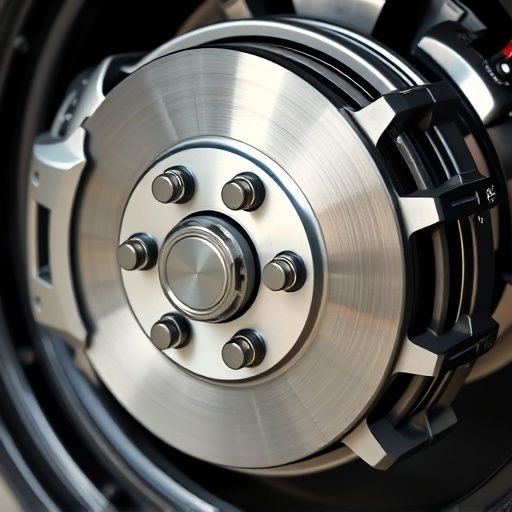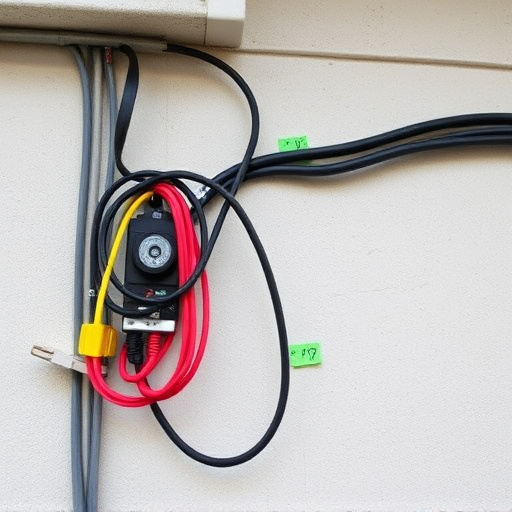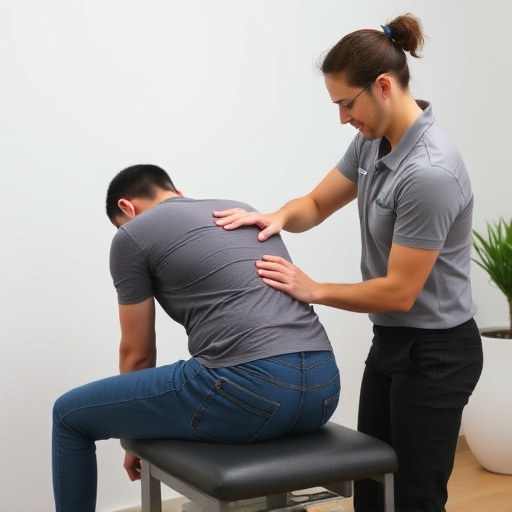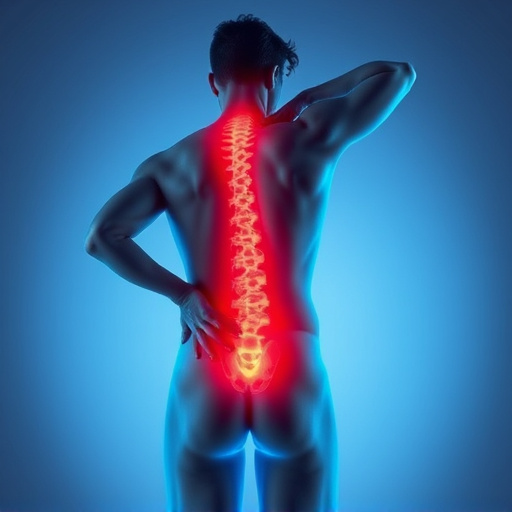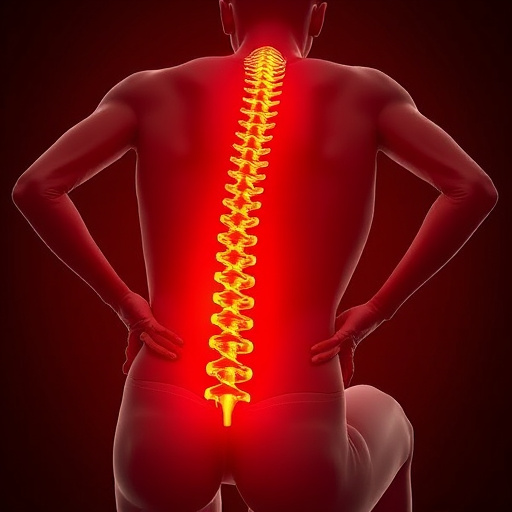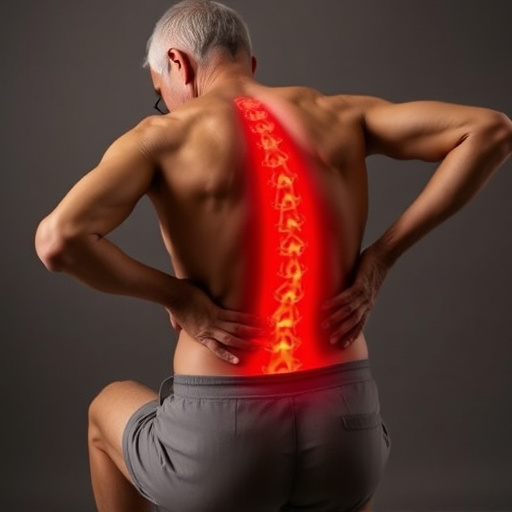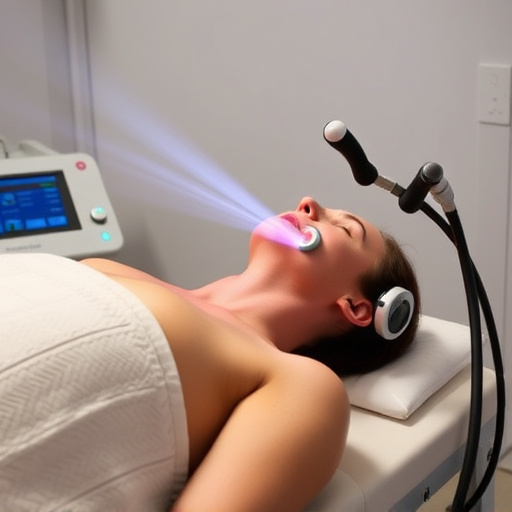A pinched nerve, caused by compression of spinal nerve roots, leads to pain, numbness or tingling radiating from the affected area. Common causes include poor posture, repetitive motions, herniated discs and tight muscles. Effective relief requires understanding symptoms and causes, with treatments like chiropractic care, physical therapy and post-injury care focusing on improving alignment, reducing inflammation and restoring mobility for lasting pinched nerve relief. Targeted strategies, such as RICE (rest, ice, compression, elevation) and exercises to reduce pressure, are crucial in sports injury recovery for back, neck and limb pain associated with pinched nerves.
Common Myths About Pinched Nerve Relief Debunked
Pinched nerves, a common issue affecting various body parts, often lead to discomfort and pain. Understanding this condition and separating fact from fiction is crucial for effective relief. This article aims to demystify four prevalent myths surrounding pinched nerve treatment. We’ll explore the basics, including causes, symptoms, and diagnosis. Then, we’ll present evidence-based strategies for recovery, from home remedies to medical interventions, empowering you with knowledge to navigate this often-misunderstood health concern.
- Understanding Pinched Nerves: The Basics
- – Definition and causes of pinched nerves
- – Common body areas affected by pinched nerves
Understanding Pinched Nerves: The Basics
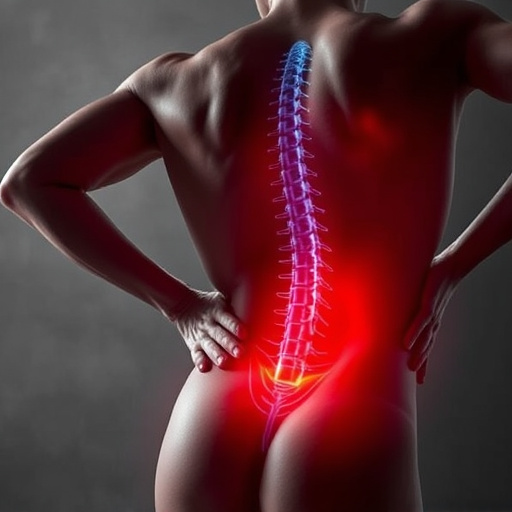
A pinched nerve, or compression of a spinal nerve root, occurs when something restricts the space around a nerve as it exits the spine. This can lead to pain, numbness, or tingling that radiates from the affected area. Common causes include poor posture, repetitive motions, injuries like herniated discs, or even tight muscles compressing nearby nerves. While discomfort from pinched nerves can be significant, many people rely on outdated methods or myths for relief instead of seeking evidence-based treatments.
Understanding the basics of pinched nerve conditions is crucial when exploring effective relief options. It’s important to differentiate between symptoms and causes, as treating only the symptoms without addressing the underlying compression may provide temporary relief but not a lasting solution. Chiropractic treatment, physical therapy, and post-injury care can play significant roles in managing pinched nerves by improving spinal alignment, reducing inflammation, and restoring mobility to alleviate pressure on affected nerves.
– Definition and causes of pinched nerves

A pinched nerve occurs when a branch of a peripheral nerve becomes compressed or trapped, often due to nearby bones, cartilage, muscles, or tendons. This compression can happen anywhere in the body but is commonly felt in the wrists, elbows, shoulders, hips, and knees. It’s important to understand that while it might feel like a sharp, burning pain, what’s happening is not a nerve “pinching” in the literal sense, but rather pressure on the nerve causing irritation and reduced blood flow.
Various factors can contribute to pinched nerves, including poor posture, repetitive motions, sudden twists or impacts (like those from sports injuries), or even sleeping in an awkward position. Soft tissue injuries, such as strains or sprains, can also lead to compression of nearby nerves. Mobility improvement techniques and physical therapy are often recommended for pinched nerve relief, focusing on exercises that reduce pressure on the affected area and promote healthy movement. Sports injury recovery strategies, including rest, ice, compression, and elevation (RICE), can also help alleviate symptoms.
– Common body areas affected by pinched nerves
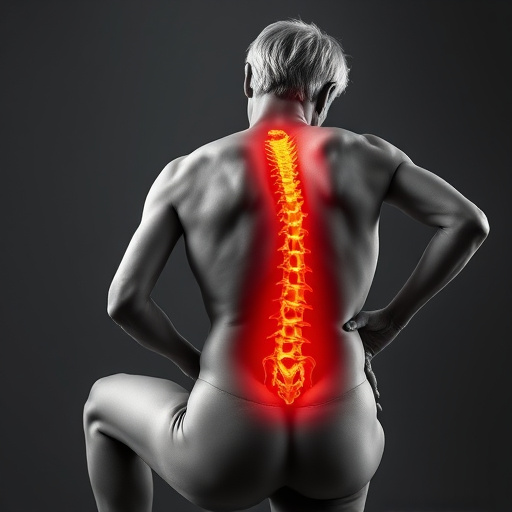
The most common areas affected by pinched nerves are the back and neck. These regions are heavily innervated, meaning a slight compression can lead to significant discomfort and disability. A pinched nerve in the back may cause radiating pain that travels down the legs, while a compressed nerve in the neck can result in shoulder and arm pain, numbness, or tingling sensations. Other common areas include the wrists, hands, and feet, often affected by repetitive strain or improper posture.
In the context of sports injury recovery and mobility improvement, understanding pinched nerve relief is crucial. Soft tissue injuries, such as muscle strains or ligament sprains, can also lead to pinched nerves. Proper treatment involves a multi-faceted approach, combining rest, physical therapy, and in some cases, medication for pain relief and inflammation reduction. Identifying the root cause of the pinched nerve is key to effective management and long-term prevention, ensuring individuals can return to their active lifestyles without persistent discomfort or limitation.
In addressing common myths about pinched nerve relief, it’s clear that while many home remedies offer temporary relief, professional treatment is often necessary for lasting recovery. Understanding the root causes and affected areas of pinched nerves empowers individuals to seek appropriate care. By debunking popular misconceptions, this article aims to guide folks towards effective strategies for managing and alleviating pinched nerve symptoms, ensuring a smoother path to healing and reclaiming comfort in their daily lives.

